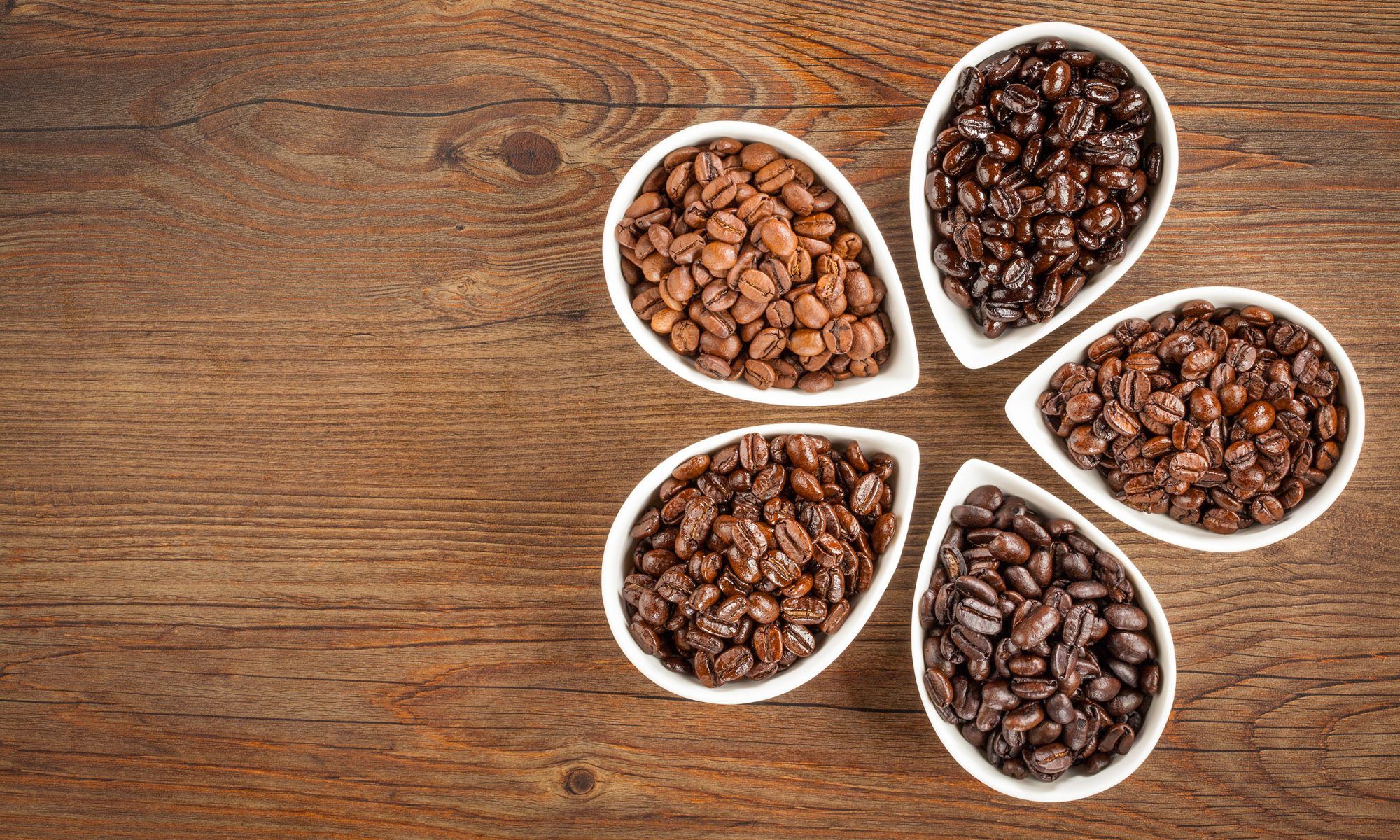Light, medium or dark
Know your coffee roast

Coffee roasting is a heating process that helps to create aroma and taste out of the raw coffee beans.
Carving is a science and an art form in itself, as there is no standard one can simply follow.
Each type of coffee has its own unique characteristics that need to be taken into consideration before and during roasting.
In just a few seconds, a serving of coffee can go from being perfectly roasted to spoiled, so experience and knowledge of the ingredients are incredibly important.
The most common way to describe coffee roasts is based on the colour of the pre-roasted beans, which typically ranges from light roasted to very dark roasted.
Characteristics of coffee roasts
Light Roast
- Light brown colour
- Dry surface
- High acid
- Fruity, sweet aroma
- Preserves the original properties of coffee
- Let body
- High caffeine content
Medium Roast
- Brown colour
- Dry surface
- Balanced taste and acidity
- Slight sweetness in taste
- Medium-bodied body
- Medium caffeine content
Dark Roast
- Dark brown colour
- Lightly oiled surface
- Strong taste and aroma
- Bittersweet aftertaste
- Full body
- Low acid
- Medium caffeine content
Very Dark Roast
- Dark brown / almost black colour
- Oiled surface
- Bitter and slightly smoky taste
- Powerful and intense
- Very full bodied
- No acid
- Low caffeine content
Light roasted coffee
Lightly roasted coffee is roasted until the temperature reaches approx. 180-205 ° C, and the beans have a light brown colour.
The light roasting preserves the coffee’s natural taste and aroma to a greater extent than with darker roasting, which gives a coffee with a light and fine body, remarkable acidity and a sweet, fruity aroma.
Light roasted coffees are often slightly sour and are tasted in the back of the mouth, as is known from, for example, sour sweets.
Medium roasted coffee
Our preferred roasting level here at Viking Roast.
Medium roasted coffee is roasted until the temperature reaches approx. 210-220 ° C, and the beans have a brown colour.
This type of roasting preserves the coffee’s natural taste and aroma to a lesser extent than lighter roasts but is complemented by a full-bodied and round body with a sweeter and darker taste.
Dark roasted coffee
Dark-roasted coffee is roasted until the temperature reaches approx. 225-230 ° C, and the beans have a nice dark brown colour and a slightly oiled surface.
This type of coffee has a much fuller body than lighter roasts, as taste and aroma are affected by the longer roast.
The acid disappears and is replaced by a bittersweet aftertaste and a slightly spicy taste.
Very dark roasted coffee
Very dark roasted coffee is roasted until the temperature reaches approx. 240 ° C, and the beans have a very dark brown colour and an oiled surface.
Compared to the other degrees of roasting, this type of coffee has its aroma and taste from the roasting, which drowns out the natural properties of the coffee.
The coffee has a very full body, no acidity and a slightly bitter and smoky taste – a rich, powerful and dark coffee experience, as you know from a real Italian mocha/espresso.
What degree of roast should you choose?
The choice of coffee should not necessarily be made on the basis of the degree of roasting, but rather on the basis of which raw materials, flavors and aromas are preferred. Coffee is a matter of taste, and the most important tool in that context is your taste buds – you have to try different coffees to find the type you like best.
Many parameters come into play when it comes to finding the type of coffee you like best, so there are many things to consider, including the relationship between arabica and robusta, degree of roasting, country of origin, as well as whether it is a single-origin coffee or a mixture of several different coffee beans.


Comments are closed.